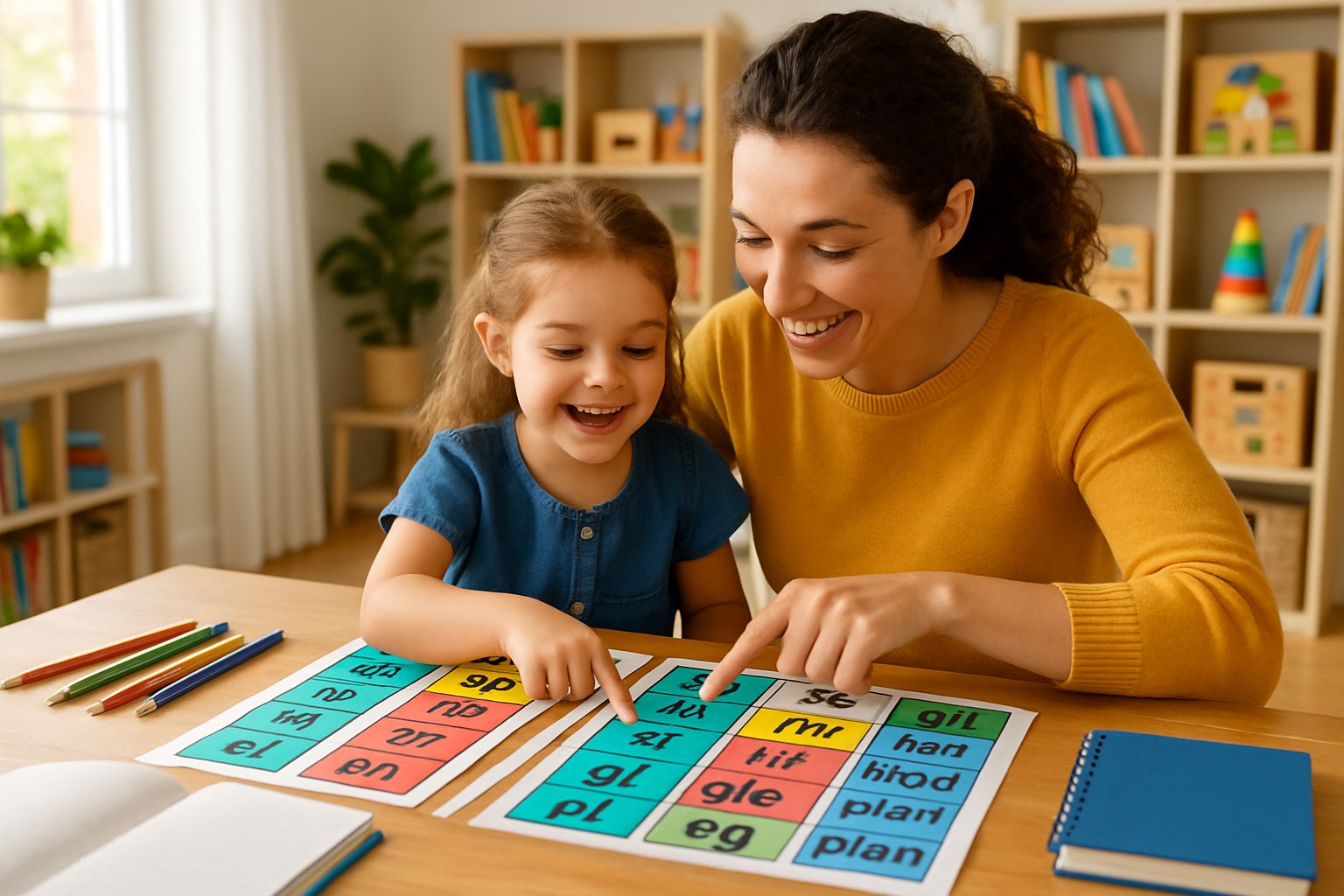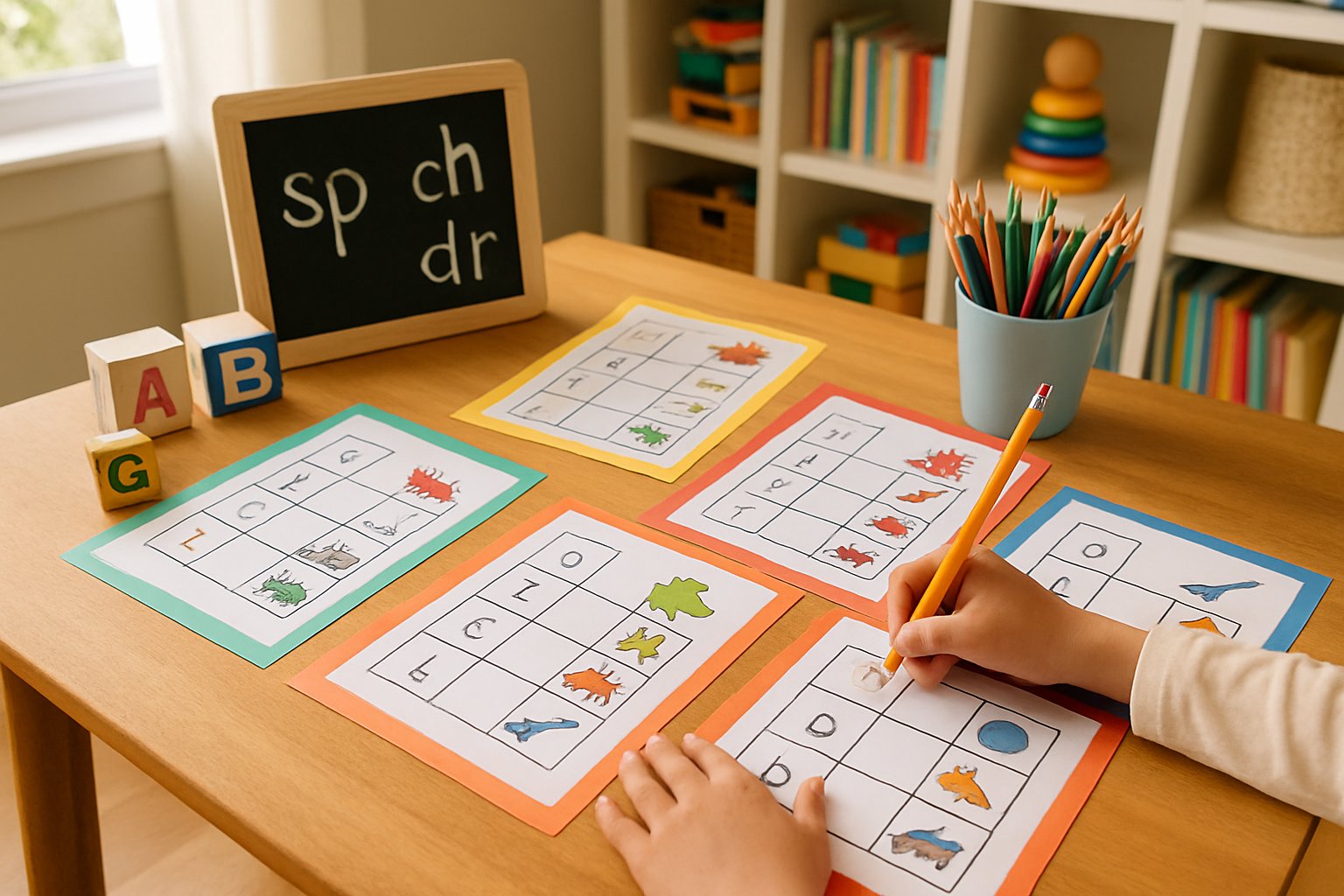Printable Blend Ladder Ideas and Types

Homeschool families can choose from many different types of blend ladders to help children learn phonics. These tools come in free printable versions and creative formats that make learning fun and engaging.
Free Printable Blend Ladders for Homeschool
Parents can find free printable blend ladders that help children learn vowel sounds and read CVC words. These resources save money while providing quality educational materials.
Most free blend ladders include consonant-vowel combinations. Children practice blending sounds like “ba,” “be,” “bi,” “bo,” and “bu” by moving down each ladder rung.
Free blend ladder printables often match other phonics materials on educational websites. This helps families create a complete learning system without spending extra money.
Key features of free printables:
- Black and white versions for easy printing
- Multiple consonant combinations
- Simple format that children can follow
- Compatible with standard home printers
Many websites offer these materials for personal use only. Families can print as many copies as needed for their own children.
Creative Ways to Use Blend Ladders at Home
Smart families turn basic blend ladders into fun learning games. They can laminate the ladders and use dry erase markers to add ending consonants for CVC word practice.
Interactive activities include:
- Race games – Children compete to read ladders quickly
- Sound hunts – Kids find objects that match ladder sounds
- Story building – Using ladder words to create simple sentences
Parents can create blend ladder variations with mixed vowel orders instead of alphabetical sequences. This challenges children to think more carefully about each sound.
Daily practice works best with short 10-15 minute sessions. Children stay focused when activities feel like play rather than work.
Some families post completed ladders on walls as reading references. This gives children confidence when they see their progress displayed.
Blend Cards and Phonics Ladder Alternatives
Phonics ladder alternatives include wall cards and beginning sound activities that work alongside traditional ladders. These tools provide variety in daily lessons.
Blend cards offer portable practice options. Children can use them during car rides or quiet time activities.
Popular alternatives include:
- Wall charts with multiple blends
- Flip books with consonant-vowel combinations
- Digital apps that mimic ladder activities
- Beginning blend cards with picture clues
Complete blend ladder packs often include teacher clue cards and student worksheets. These materials give parents extra support and ideas for lessons.
Word family ladders focus on ending patterns like “-at,” “-et,” and “-it.” Children learn both beginning and ending sound patterns through this approach.
Some programs combine ladder work with other phonics methods. This multi-approach strategy helps children who learn differently.
Phonics Strategies Using Printable Blend Ladders

Blend ladders help children master letter sounds and word building through structured practice. These tools teach short vowel sounds while building reading confidence step by step.
Building Phonemic Awareness with Blend Ladders
Blend ladders teach short vowel sounds as the foundation of phonemic awareness. Children start by saying vowel sounds first before adding consonants.
Teachers should use a pointer to guide children’s eyes to vowels. This shows that vowels are the most important part of each word.
The basic process works like this:
- Point to the vowel first
- Have the child say the vowel sound
- Add the consonant sound
- Blend both sounds together
For example, using a B ladder, children practice these vowel sounds:
- bag (short a)
- beg (short e)
- big (short i)
- bog (short o)
- bug (short u)
Children move down each ladder through all five vowel sounds. If they struggle, focus on one sound per day. This builds strong phonemic awareness before moving to harder skills.
Practicing CVC Words and Decoding Skills
Adding consonants to blend ladders creates CVC words for decoding practice. Children learn to read consonant-vowel-consonant patterns.
Laminated blend ladders work best for this activity. Parents can use dry erase markers to add ending consonants. This lets children practice many different words.
Common CVC word patterns include:
- bat, cat, hat, mat
- bed, red, led, fed
- big, dig, fig, pig
- dog, log, hog, jog
- bug, hug, mug, rug
Children should read from left to right using smooth motions. This builds proper reading habits early. The visual ladder format helps them see word patterns clearly.
Start with simple endings like -t, -n, -p. Move to harder endings as children improve. This gradual approach builds confidence in decoding skills.
Integrating S Blends, L Blends, and R Blends
Advanced blend ladders introduce consonant clusters like s blends, l blends, and r blends. These teach children to blend multiple consonants with vowels.
S blends include combinations like:
- st- (stop, step, stick)
- sp- (spin, spot, spun)
- sc- (scan, scat, scum)
L blends feature patterns such as:
- bl- (blow, bled, blog)
- cl- (clap, clef, clip)
- fl- (flag, fled, flip)
R blends cover sounds like:
- br- (brag, bred, brig)
- cr- (crab, cred, crib)
- dr- (drag, dred, drip)
Children follow the same process as basic ladders. They say the blend sound first, add the vowel, then read the complete sound. This method works for all consonant combinations.
Practice one blend family at a time. Master simple blends before moving to complex ones. This systematic approach prevents confusion while building strong reading skills.
Leave a Reply